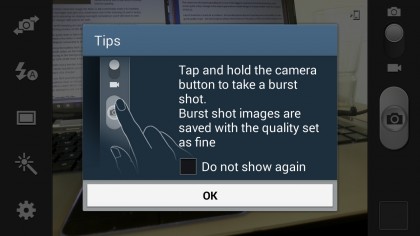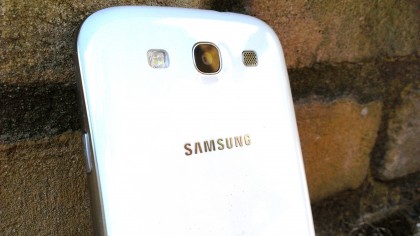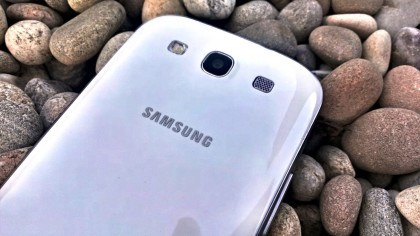Why you can trust TechRadar
The camera on the Samsung Galaxy S3 is one of the biggest surprises from the Korean firm, and shows quite a step-change in the way it approaches mobile design: it's stuck at 8MP with the sequel to the S2.
I don't think this is much of a problem - the humble phone doesn't need any more than 8MP to take good quality snaps - but Samsung has always chased specs in the past, so this was an interesting move.
It certainly doesn't live up to the 20.1MP offering of the Sony Xperia Z1 Compact, but beats the Moto G with its 5MP sensor hands down.
While there's no dedicated shutter button, getting into the camera is a piece of cake thanks to the number of options you've got.
Making sure one of the icons is on the lock screen definitely helps, but you can also hold the screen and turn the S3 into landscape mode (when on the lock screen) and the camera opens up instantly - but for the life of me I couldn't get it to work.

Samsung has thankfully dialled back the range of settings you can mess around with on the Galaxy S3, which means a slicker experience when trawling through the settings - plus you can edit the icon placement to make it simpler to find the functions you use most often.
It has, however, added in a new feature with the software update: a wand will enable you to apply effects before shooting. One of the most striking is the change to filter out colours, meaning you can get some great shots where only blue and green are on show, for instance.
One of the most novel features on the Galaxy S3 is the ability to recognise faces from within photographs - this is meant to make it simpler to find the people you care about. It seems a little nonsensical though that the results don't go into the contact's profile within your phone (which would make sense given you have to assign a contact to the tag to make it work) but if you've got them in a group you can see that simply from within the Gallery app.
However at times the trick is a little bit hit and miss. I'd estimate around 80% of the photos I took got the face spot on (although sometimes questioned whether the tag was right rather than automatically setting it) but the other times it had no idea.
However, when it does work, it's mightily impressive, and you can email the photo to those involved (but sadly not upload to Facebook pre-tagged).

There are a number of other features I like too: burst mode works well, taking 20 photos in a row at around 10 per second, which is great if you're trying to take a picture of your cat doing a back flip and want all of the sections.
Best shot can also be used with burst mode, where the Samsung Galaxy S3 works out the best picture for you from the selection, but you're limited to eight shots in this scenario.
I'm probably being a little bit picky, but the processing time after each best shot set taken was a little long. Thankfully though, Samsung has fixed an issue where you had to set up burst mode manually, you can just hold the shutter key now.
The front-facing camera is closing in on being a decent sensor in its own right - at 1.9MP it's capable of taking non-grainy self portraits and can even record in 720p video as well.

The other features, such as HDR mode, beauty mode, panorama and smile shot, all offer excellent picture quality if you're into that sort of thing - although I can't really see a use for cartoon other than for those who want a blurry mess to show to friends.
Overall, the speed with which you can take a picture, the options on offer and the sheer range of settings for those who want to dig a little bit deeper (the contrast, exposure, ISO levels and white balance tweaks will appeal to many) all combine to make a cracking camera that will be more than adequate for most.
I can't see the Galaxy S3 winning many cameraphone of the year awards, thanks to last-gen hardware onboard - but the pictures you take are available quickly, have a variety of ways to improve them and certainly look pretty decent.

Gareth has been part of the consumer technology world in a career spanning three decades. He started life as a staff writer on the fledgling TechRadar, and has grew with the site (primarily as phones, tablets and wearables editor) until becoming Global Editor in Chief in 2018. Gareth has written over 4,000 articles for TechRadar, has contributed expert insight to a number of other publications, chaired panels on zeitgeist technologies, presented at the Gadget Show Live as well as representing the brand on TV and radio for multiple channels including Sky, BBC, ITV and Al-Jazeera. Passionate about fitness, he can bore anyone rigid about stress management, sleep tracking, heart rate variance as well as bemoaning something about the latest iPhone, Galaxy or OLED TV.
